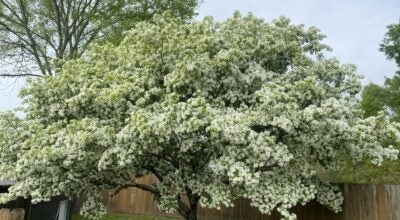The dogwood trees
Published 4:06 pm Wednesday, March 13, 2013
As springtime moves a little further along, the dogwood trees begin to sprout blossoms to help welcome the new season. Most of their blooms are white in and around our area, but you will occasionally spot one with pink blooms. In times gone by, the interstate highway from Poplarville, Miss. north to Hattiesburg, Miss. had some of the prettiest dogwood trees in the area, lining both sides of the highway for several miles. As they tried to rework the shoulders of the highway some of the dogwoods were cut down. Many of the flowering trees are still there, prettier than ever and enjoyed by all the people traveling that road.
Another pretty road to travel is from Beaumont, Texas up to Sillsbee, Texas. There are some of the prettiest and largest collections of dogwoods. One thing that has made this section of Texas so great is the fact that this area had an ordinance that prevented anyone from cutting these flowering trees. Apparently in years gone by some of the woodworking shops in the area had cut the trees and used the very tough wood for projects like walking sticks, tool handles and similar things. If the Texans needed an ordinance, they passed it and the law enforcement people made sure it was obeyed. After watching these trees during this drive for several years not one tree was missing.
The dogwood tree has changed in many ways since early Biblical times. Back during the time of Moses the tree that we now call the dogwood was much larger and had several different names. Some of the stories of these early days list this as the tree that was used to make the crosses for crucifying people back in the time the Romans were persecuting the Jews. They also used these crosses to punish their own people if they had broken the law.
Some of the old stories of the times when Romans ruled the nations they had conquered say that the cross Jesus was crucified on came from the forerunner of the dogwoods we see now. Back in those days, the tree that we call the dogwood was a large tree, with very strong wood that was used for a lot of things. It was about the only large tree they could use for building houses and castles. This wood was also used to make weapons, spears, clubs, bows and arrows.
It is also listed as the time the dogwood became much smaller and could not be used as a cross. There have been many names for these trees and in the 1500s the English started calling it the dog-tree and in the early 1600s it was “Dogwood,” with several other names in the different parts of the country, like the hounds tree, the dogberries or hound berries, and sometimes the “Whipple-tree.”
Whatever the name has been, these trees have always been popular wherever they may be, blooming to help bring in the spring season. Back in other early times sprigs of the dogwoods were given to unmarried women to show that a man was interested. If the lady was interested she kept the twig or the flower as a sign. If she returned the twig it was a sign of indifference. This was back when pioneers would break off a twig, peel off the bark, bite the twig and use it to brush their teeth, before toothpaste was available.
Every part of our great country has their special trees and as you travel around the northeast you’ll see many different species, like the apple tree, cherry trees, and many without flowers, still very pretty. It’s just what you have living in the area where you live that makes your yards, fields or roadways welcome the spring every year.
Just remember to be thankful for the blessings we all have and remember to thank the good Lord every day. May He continue to help and bless us all each day.






